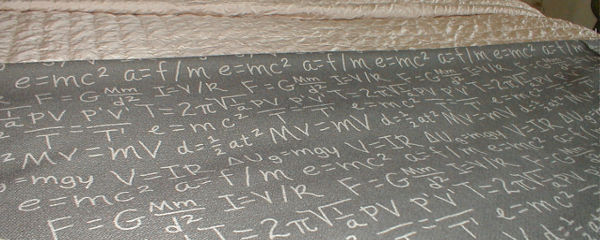What I’ve Learned:
“Noble gases: They are SO not into you.”
When you hear the word noble, it conjures many thoughts. French aristocracy. Those starch-shirted tea-sippers on PBS. “Barnes and”. But what is it exactly that these “noble” things have in common?
For starters, they really don’t like dealing with people. They’re not into sharing or helping or customer service. Or customers. Or anyone they consider peasants. Which is all of us.
But this notion of noble isn’t limited to the Antoinettes and booksellers and creepy Crawleys of the world. It’s also pretty much the way noble gases behave: hands-off, aloof and rarely intermingling with the common folk. Not while anyone is looking, anyway.
In atomic terms, this means that atoms of the noble gas elements — helium, neon, argon, krypton, xenon and radon — almost never form molecular bonds with other elements.
(And unlike some “noble” families, they don’t often bond with their own kind, either.
Yeah, that’s right. I’m lookin’ at you, Habsburgs, ya interbreeding jaw-jutters.)
The reason noble gases don’t readily form molecules is that their outermost electron shells are “full”. Atomic bonding — like all bonding, according to Bert and Ernie — is about sharing. In this case, sharing of one or more electrons.
But atoms are built with “shells” of certain sizes, and the outer one is where the interatomic electron love is most likely to happen. If that outer shell already has as many electrons as it can hold, like a dozen eggs in a carton, then it’s got no room for a spare shared from another atom. And having that full shell gives the atom stability — so it’s in no hurry to loan an electron out and break up the set, either.
All the noble gas elements have atoms in this exact situation. They’ve got everything they need, and a place for everything they have. They don’t want to talk to you, nor to some chatty hydrogen ion. And especially not some clingy bonder like carbon. Carbon atoms make up to four atomic bonds at the same time.
That would never do for a noble gas. Noble gases probably hire atoms to make their dirty atomic bonds for them. Indeed. Quite. I say.
Of course, being “noble” gives the noble gases a set of unique properties. (Which, happily for them, don’t include hereditary haemophilia and chronic haughtiness.) First — as if to prove how little they want to do with you — all noble gases are colorless, odorless and tasteless. As the name suggests, they’re all also gases at normal temperatures and pressures — helium, in fact, is the only element that can’t be cooled into a solid without also applying pressure. As in, twenty-five atmospheres of pressure. Nobles really are a stubborn lot.
While it is possible — though never easy — to get the noble gases to play nice and bond with other elements, it’s actually their uppity ways that make them most useful. Helium is added to deep-sea scuba air tanks to prevent the bends, since it’s not easily absorbed into tissues. And because it’s inflammable, it’s replaced hydrogen gas for blimp filler since that whole Hindenburg “oopsie” a few decades ago.
Non-reactivity makes noble gases useful in light bulbs, too. Halogen lamps include krypton, incandescent bulbs use argon and neon lights… well. Loners or not, let’s just say Las Vegas wouldn’t be Las Vegas without a helluva lot of noble gas in its signs. And they find use in arc welding, medical and industrial lasers, MRIs, Antarctic ice dating and gas chromatographs, among many other applications.
Which might be the oddest thing of all about these elements. For a bunch of atoms too snooty to mingle with us commoners, noble gases sure do get around.



